Last week saw the first crop of fashion design graduates showcase their work with the LCF MA show taking place in the ornate Raphael Hall at the V&A. I was fortunate enough to take my seat to watch it all unfold and I was utterly blown away by the menswear design talent on show. From the nineteen students who were showcased it was the menswear that really shone through. You may have seen that the Student Collection of the Year award was taken by Sven Hoppe, whose futuristic-dandy menswear designs were one of the real highlights of the show but there were so much more talent that paraded down the catwalk. To celebrate the cream of incoming crop of graduates we aim to speak to each of our favourite students to learn more about their collections and their experiences at LCF. First up, Sarah Williams, MA Fashion Artefact. It is when I first saw her fine crafted, mind bending luggage and cases that I realised that an ordinary show review just was not enough, and that I needed to learn more. So yesterday I made a lunchtime trip to the Mall Galleries to take a closer look at Williams' collection at the LCF MA Showcase and to meet the student herself.
Despite the recent focus on heritage, traditional skills and techniques are still not valued as they once were. The traditional crafts and techniques are not being passed on to the next generations. Williams' MA project was designed to challenge this. The aim was to assess the feasibility of utilising regional historical craftsmanship in order to produce a collection of original fashion artefacts. Williams hoped to use craft to produce something which has never been seen before and would challenge the fashion industry's view on craftsmanship and how it can be used to produce something completely original. Here we talk in depth about her experiences at LCF and her hopes for the future...
SS: Congratulations on more than playing your part in an exciting MA show (in terms of menswear in particular). How did it feel seeing your finished designs on the catwalk?
Sarah Williams: It was extremely exciting to see my finished collection on the catwalk. As this was the accumulation of many months of hard work and dedication it was very rewarding to actually see them being carried.
SS: What attracted you to the LCF MA course in particular? What was the best thing about your course? And the worst?
Sarah Williams: I was drawn to the MA Fashion Artefact course mainly due to my interest in craftsmanship and I knew that it would be valued on this course. Also the term "Fashion Artefact" is open to interpretation by each student so this offers a degree of freedom in the way which you develop your concept and collection. The course requires complete dedication in order to achieve the amount of work and levels quality which are required. During the course each student is pushed by the course tutor (Dai Rees) which can be hard at the time but is well worth it at the end.
SS: What attracted you to the LCF MA course in particular? What was the best thing about your course? And the worst?
Sarah Williams: I was drawn to the MA Fashion Artefact course mainly due to my interest in craftsmanship and I knew that it would be valued on this course. Also the term "Fashion Artefact" is open to interpretation by each student so this offers a degree of freedom in the way which you develop your concept and collection. The course requires complete dedication in order to achieve the amount of work and levels quality which are required. During the course each student is pushed by the course tutor (Dai Rees) which can be hard at the time but is well worth it at the end.
SS: Now on to your collection... it showcases what luxury is and should be, the marriage of the finest materials with craftsmanship and traditional techniques but at the same time offering something entirely new. Was this a key inspiration and motivation for the collection?
Sarah Williams: Craftsmanship was the starting point to the concept which the collection is based on, but it developed to involve many other issues. It is challenging the differences between the artisan and the artist, between design and fashion.
SS: Throughout the whole design and production process three methods of change were applied to the materials used, can you talk us through them?
Sarah Williams: It was based on the theory which Richard Sennett discusses in his book The Craftsman. The three methods of change are Metamorphosis, Anthropmorphism and Presence. Metamorphosis is applied through the change of the traditional type-form of luggage. Anthropmorphism is applied by engraining the collection with human qualities such as integrity and honesty through the use of hand craftsmanship. Presence is applied through the use of branding.
Sarah Williams: Craftsmanship was the starting point to the concept which the collection is based on, but it developed to involve many other issues. It is challenging the differences between the artisan and the artist, between design and fashion.
SS: Throughout the whole design and production process three methods of change were applied to the materials used, can you talk us through them?
Sarah Williams: It was based on the theory which Richard Sennett discusses in his book The Craftsman. The three methods of change are Metamorphosis, Anthropmorphism and Presence. Metamorphosis is applied through the change of the traditional type-form of luggage. Anthropmorphism is applied by engraining the collection with human qualities such as integrity and honesty through the use of hand craftsmanship. Presence is applied through the use of branding.
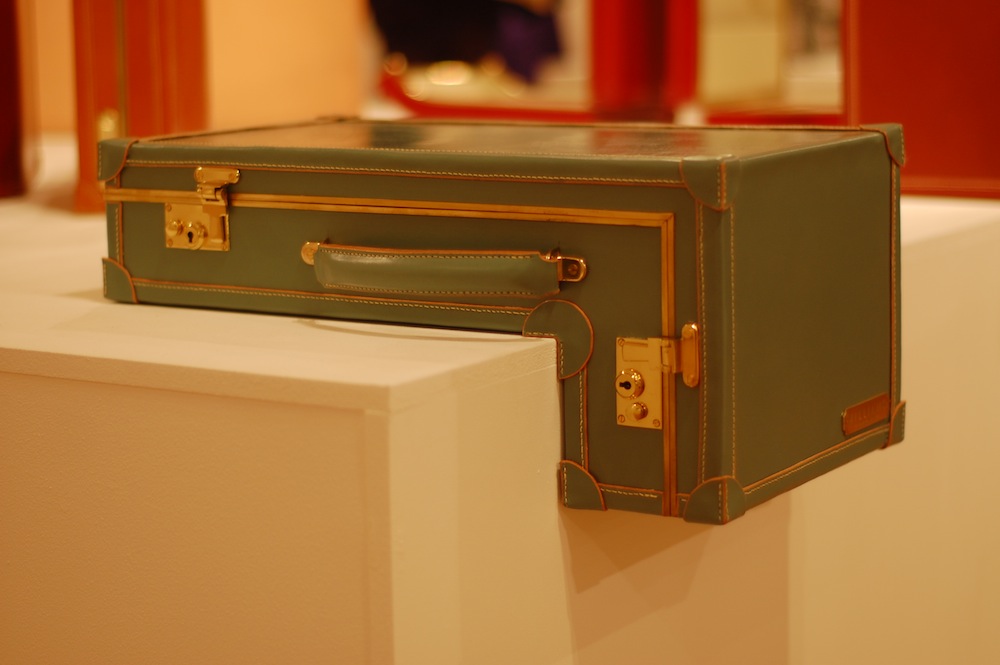 The suitcase. A metamorphosed version of a briefcase around the needs of a modern working person, designed to fit a Mac Book Laptop with straps to hold in position. There is a drawer ideal for paper documents.
The suitcase. A metamorphosed version of a briefcase around the needs of a modern working person, designed to fit a Mac Book Laptop with straps to hold in position. There is a drawer ideal for paper documents.SS: All of your products are, of course, handmade and are either bespoke or limited edition and made to the highest standards. How long did each bag take to make?
Sarah Williams: Due to the nature of production in this project it was extremely labour intensive and therefore required a lot of time and dedication. The use of hand craftsmanship is integral to the project therefore traditional saddle stitch was used in all of the cases which was all completed by hand by myself. Valerie Micheal is quoted as saying “Hand craftsmanship techniques offer innovation and originality because they are not limited by the constraints of machinery.” I completely agree with this statement. When producing using hand craftsmanship the options to you are limitless and this openness to experimentation will inevitably led to new and original possibilities.
SS: You were sponsored by Metropolitan, how receptive were they to your designs and what did they make of the collection?
Sarah Williams: Yes Metropolitan Leather Ltd sponsored the leather for the collection. Roy Winnard the owner and all of the staff were extremely helpful. The dyed the leather specifically for the colours which I required. Roy Winnard was interested in helping as he wants to promote the use of bridle leather in products. Roy is very proud of the collection and is going to display some of the cases when he exhibits at Premier Vision in Paris next week.
Sarah Williams: Due to the nature of production in this project it was extremely labour intensive and therefore required a lot of time and dedication. The use of hand craftsmanship is integral to the project therefore traditional saddle stitch was used in all of the cases which was all completed by hand by myself. Valerie Micheal is quoted as saying “Hand craftsmanship techniques offer innovation and originality because they are not limited by the constraints of machinery.” I completely agree with this statement. When producing using hand craftsmanship the options to you are limitless and this openness to experimentation will inevitably led to new and original possibilities.
SS: You were sponsored by Metropolitan, how receptive were they to your designs and what did they make of the collection?
Sarah Williams: Yes Metropolitan Leather Ltd sponsored the leather for the collection. Roy Winnard the owner and all of the staff were extremely helpful. The dyed the leather specifically for the colours which I required. Roy Winnard was interested in helping as he wants to promote the use of bridle leather in products. Roy is very proud of the collection and is going to display some of the cases when he exhibits at Premier Vision in Paris next week.
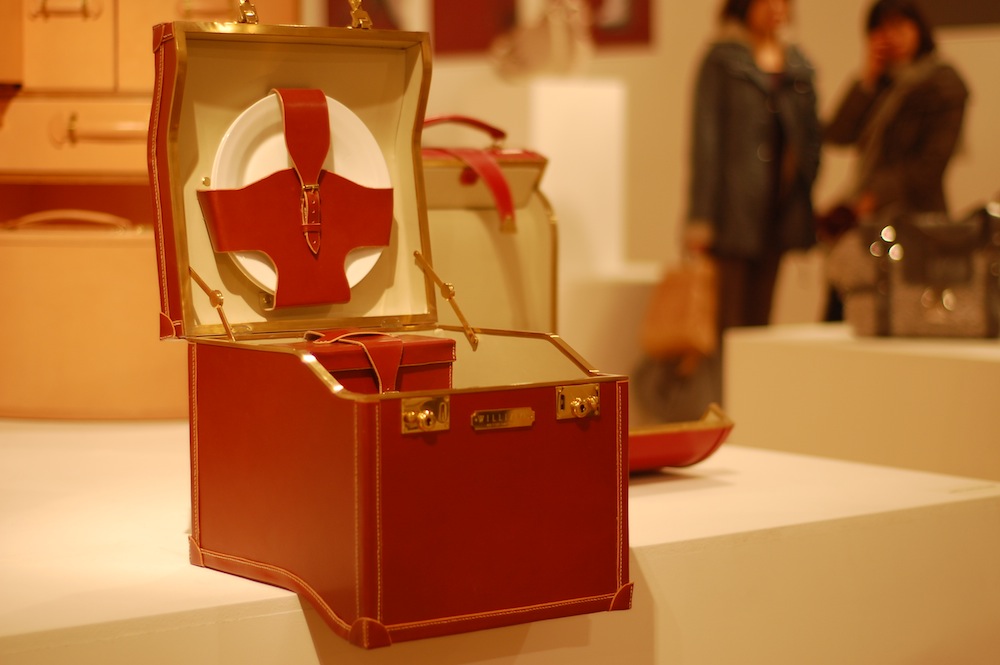 The picnic box. This design began as a hat box but developed into a functional picnic box which fitted the context better. It has an interior holder for plates, cutlery, napkins and a detachable box stitched container for glasses.
The picnic box. This design began as a hat box but developed into a functional picnic box which fitted the context better. It has an interior holder for plates, cutlery, napkins and a detachable box stitched container for glasses.SS: As well as using the finest bridle leather, the brass frames were produced by an accomplished metal worker, can you tell us any more about the craftsmanship that went in to them and how you found them?
Sarah Williams: Joe Macneil from Macneil Metalcraft. I worked closely with Joe to produce frames which would live up to the rest of the design and believe that this was accomplished. Due to the unusual shapes and forms each frame had to be produced individually and required a high level of craftsmanship and skills.
SS: I know this is difficult question to answer but have you got a favourite, anything that you were most proud of?
Sarah Williams: It is a difficult question but if forced my favourite would be the briefcase which a small curve. This was the first case which I produced and it is also the one of the most subtle designs. However, the designs which I am most proud of is the "arch" shape case. This design was one of the most challenging to produce and required a massive amount of time and effort. So when it was completed successfully I was very proud of it.
SS: Finally, what would you like to achieve in 2010 and beyond?
Sarah Williams: I am hoping to develop the designs further and make more. Further into the future I would like to set up my own design label and produce bespoke and limited edition cases. I would like to help appreciation for craftsmanship and cultural differences in society.
Sarah Williams: Joe Macneil from Macneil Metalcraft. I worked closely with Joe to produce frames which would live up to the rest of the design and believe that this was accomplished. Due to the unusual shapes and forms each frame had to be produced individually and required a high level of craftsmanship and skills.
SS: I know this is difficult question to answer but have you got a favourite, anything that you were most proud of?
Sarah Williams: It is a difficult question but if forced my favourite would be the briefcase which a small curve. This was the first case which I produced and it is also the one of the most subtle designs. However, the designs which I am most proud of is the "arch" shape case. This design was one of the most challenging to produce and required a massive amount of time and effort. So when it was completed successfully I was very proud of it.
SS: Finally, what would you like to achieve in 2010 and beyond?
Sarah Williams: I am hoping to develop the designs further and make more. Further into the future I would like to set up my own design label and produce bespoke and limited edition cases. I would like to help appreciation for craftsmanship and cultural differences in society.
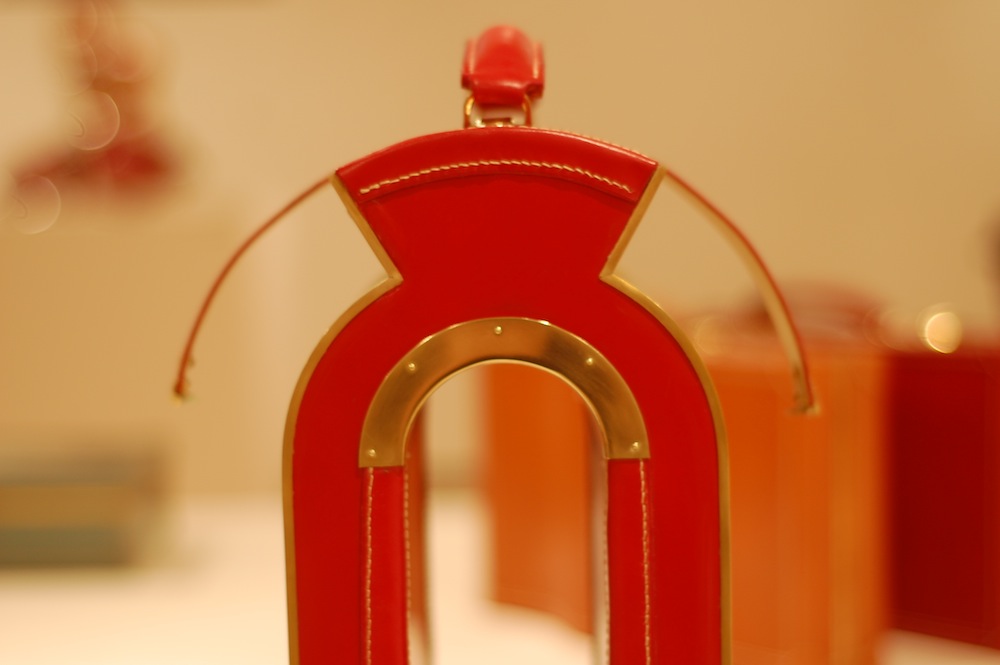 The day case. The most extreme use of metamorphosis and the most difficult to produce. It is literally a briefcase which has melted at the centre point resulting in it functioning in a completely new manner. The case has interior pockets for paper, envelope and pens. There are also small pull drawers. Although the brass curved edging was not in the original design, it completes the artefact.
The day case. The most extreme use of metamorphosis and the most difficult to produce. It is literally a briefcase which has melted at the centre point resulting in it functioning in a completely new manner. The case has interior pockets for paper, envelope and pens. There are also small pull drawers. Although the brass curved edging was not in the original design, it completes the artefact.-----------
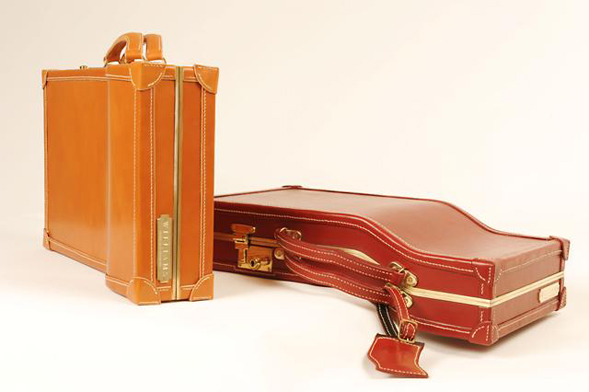
Throughout the production of her collection Sarah Williams has proved that it is feasible to produce a truly original collection of fashion artefacts using traditional hand craftsmanship skills. In addition to creating bags that make your heart skip a beat, her desire to breathe fresh life and excitement in to traditional skills and techniques should be applauded.

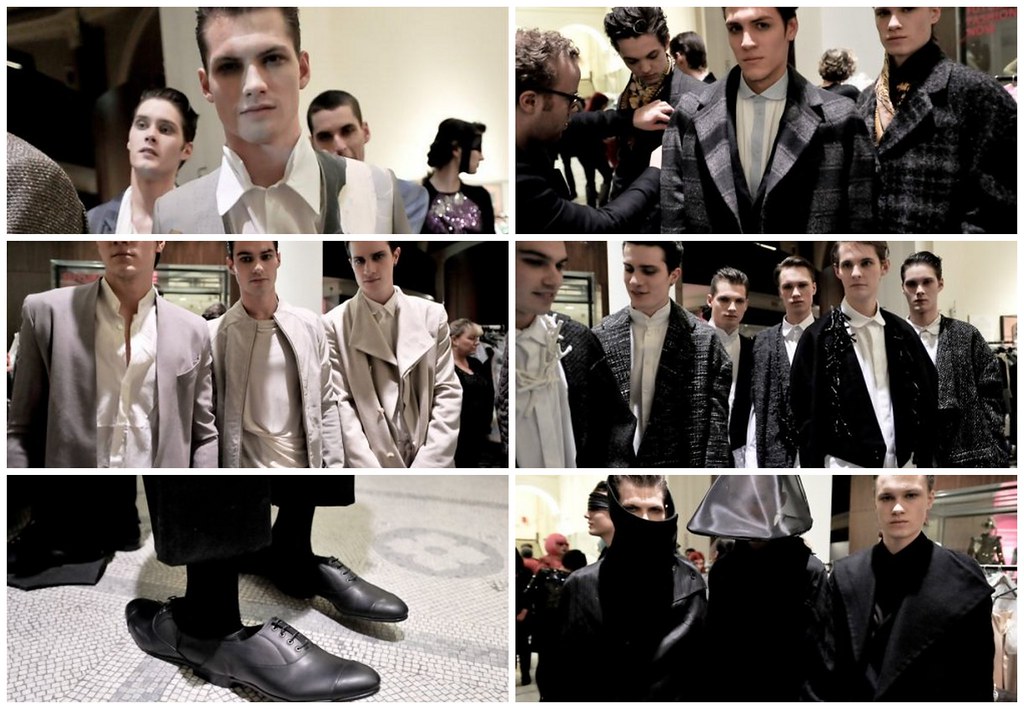

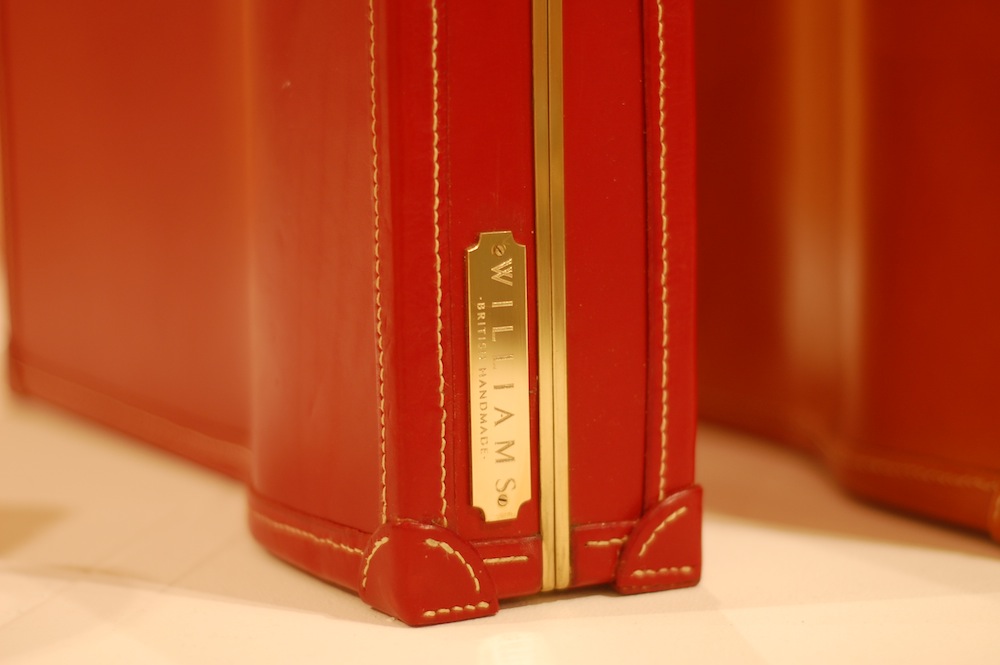
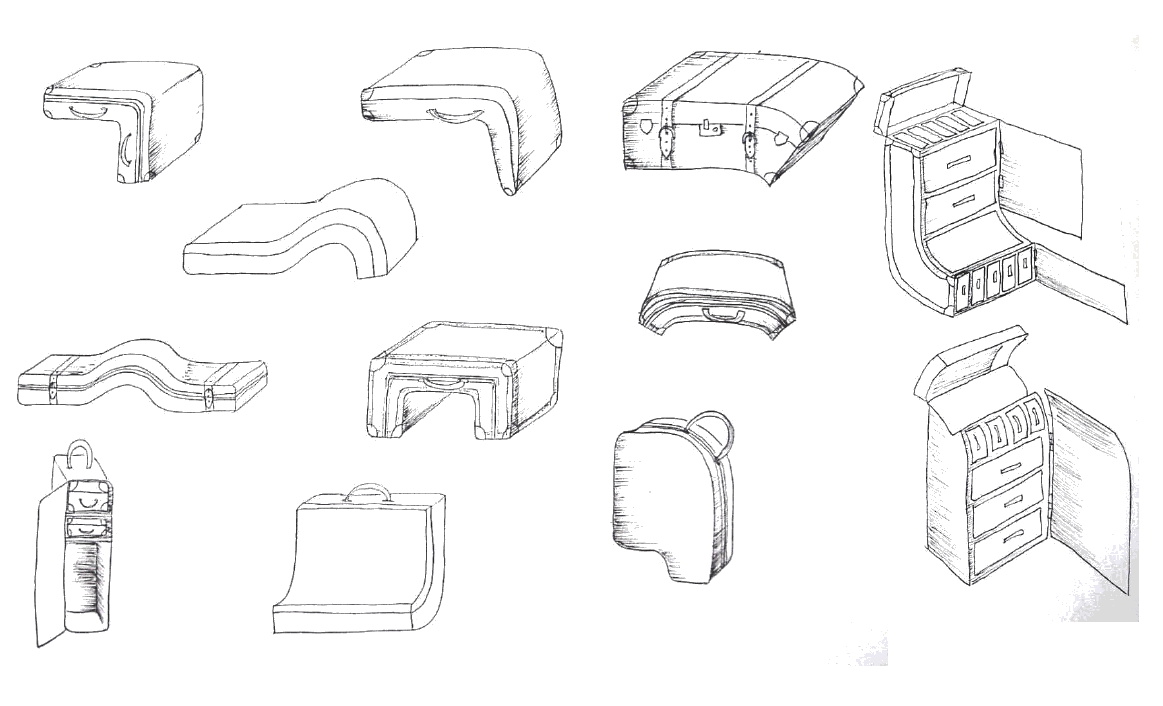
7 comments:
Wow!!!!!!!!!!!!!!!
The briefcases are so beautiful.
Sarah's cases really were a show stealer! AMAZING.
x
I'm confused as to the added functionality of a corner shaped briefcase for a modern working man... but on a purely aesthetic view the cases are astoundingly good looking and well made!
-Percy
pauperthreads.wordpress.com
These are very exciting...
The cases are amazing!
Thanks for the interview =)
they're AMAZING! i want them all!
Wow! I've never seen such unique yet gorgeous briefcases. I'm going to do a feature on my blog about Ms. Williams.
Cheers,
Kara Fox
Style Writer
MyBriefcases.com/blog
Post a Comment